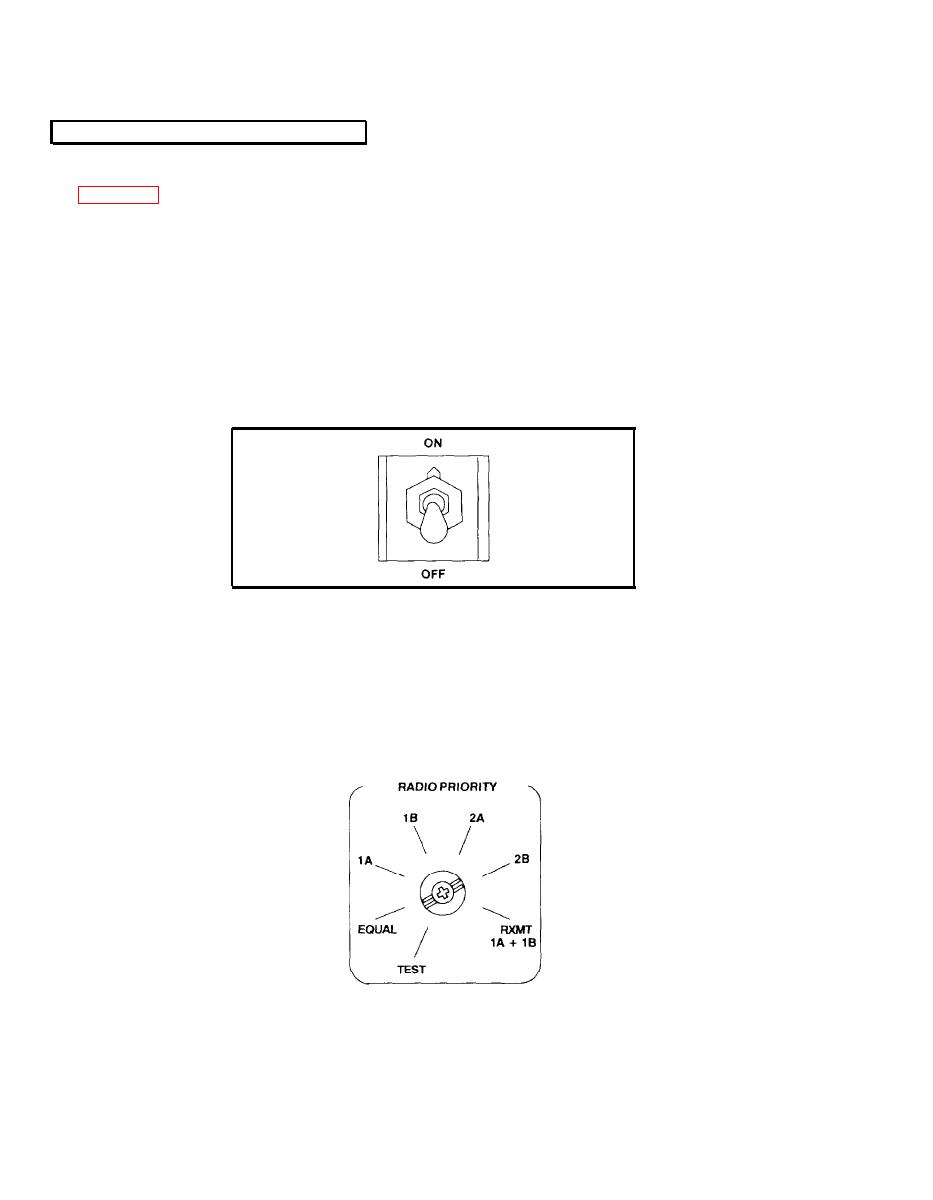 |
|||
|
|
|||
|
|
|||
| ||||||||||
|
|  TM 11-5820-890-10-8
FHMUX Performance Data
3.3c.
Vehicular Configuration
Figure 3-5 shows a typical vehicular configuration using one multiplexer and two VRC-92A radios. The
introduction of the multiplexer into the radio system is "transparent", that is it does not affect the way the radios
are operated. The number of vehicular antennas needed is reduced from four to one. Instead of each radio
going directly to its own antenna, the antenna connections of the four radios are routed to the multiplexer and
the multiplexer then connects to a single common antenna. To provide frequency hopping information to the
multiplexer, the SNAP control signals provided by the VAA must be connected to the multiplexer, one SNAP
cable per VAA. Vehicular DC power (22 to 32 Vdc) must also be supplied to the multiplexer through J2 on the
Power Amplifier Mount (MT-6353/VRC) or through J2 on the Mounting Base (MT-6576/VRC).
The only two operator controls on the multiplexer are the POWER switch and the RADIO PRIORITY switch. The
POWER switch must be placed in the ON position to use the FXMUX (the POWER switch can be turned ON and
left ON if the DC power is controlled remotely by CB1 on the VAA).
Figure 3-3. POWER Switch
The RADIO PRIORITY switch position is set based on the desired operating scenario. In the EQUAL position, all
four radios connected to the multiplexer will have equal communications priority. In the 1A, 1B, 2A and 2B
positions, the selected radio will have a slightly higher priority than the other radios whenever there is frequency
conflict (a frequency conflict is when two or more hopping radios want to communicate on the same frequency
at the same instant). In the RXMT(1A+1B) position, radios 1A and 1B (operating in the retransmit mode) have
higher priority than radios 2A and 2B. Normally the switch will be set in the EQUAL position, but if desired, higher
priority can be given to a critical communications link
Figure 3-4. RADIO PRIORITY Switch
The TEST position is used only for Off -Line BIT and the switch should not be placed in this position except as
directed in the -20 and -30 maintenance manuals.
3-6
|
|
Privacy Statement - Press Release - Copyright Information. - Contact Us |